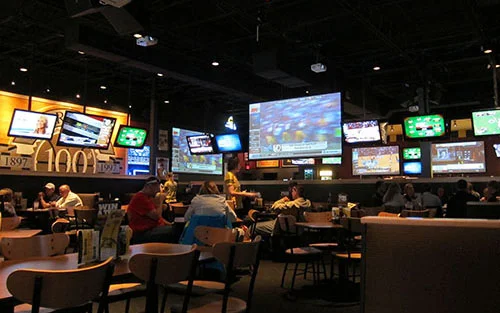Investigating the Development of Digital Display Technology and Its Impact on Setup Practices
Wiki Article
Digital signage technology has come a significant way since its beginning. At first, displays were fixed and needed manual modifications, which could be time-consuming and demanding. With the progress of innovation, digital signage has evolved into a flexible and engaging medium. Today, screens can exhibit vibrant images, footage, and real-time information, making them more engaging for viewers. This evolution has not only altered how data is presented but has also transformed the way businesses and organizations interact with their customers.

One of the key advancements in digital signage solutions is the use of high-definition displays. These screens offer improved resolution and hue accuracy, which improves the overall viewing experience. Additionally, the advent of light-emitting diode and LCD systems has made it possible to create thinner and more lightweight displays. This has enabled for more versatile setup options, such as wall installation, suspending, or even freestanding screens. As a consequence, businesses can select the most suitable setup that suits their environment and audience requirements, making digital signage a flexible solution for various environments.
Another notable advancement is the integration of media administration platforms (CMS). These platforms allow operators to quickly create, schedule, and oversee content across various displays from a single platform. This feature is particularly beneficial for businesses with several sites, as it ensures uniform communication and branding. Furthermore, many CMS systems offer cloud-based solutions, allowing remote access and real-time updates. This means that businesses can promptly react to changes in data or promotions, keeping their material current digital signage for public spaces and relevant.
The impact of digital signage solutions on setup practices cannot be ignored. With the growth of interactive screens and touchscreens, installation has become more complex. Technicians must now take into account factors such as wiring, networking, and customer interaction. Additionally, the need for appropriate installation and placement is crucial to ensure optimal sightlines and approachability. As a result, expert setup solutions have become increasingly important, as they bring expertise in both systems and aesthetics to develop impactful digital signage systems.
In summary, the evolution of digital signage technology has profoundly impacted installation practices and the way information is shared. With advancements in screen systems, media administration platforms, and installation methods, businesses can develop engaging and impactful displays that captures the focus of their viewers. As digital signage continues to expand and evolve, it will undoubtedly play a crucial role in defining the prospects of communication in multiple sectors.